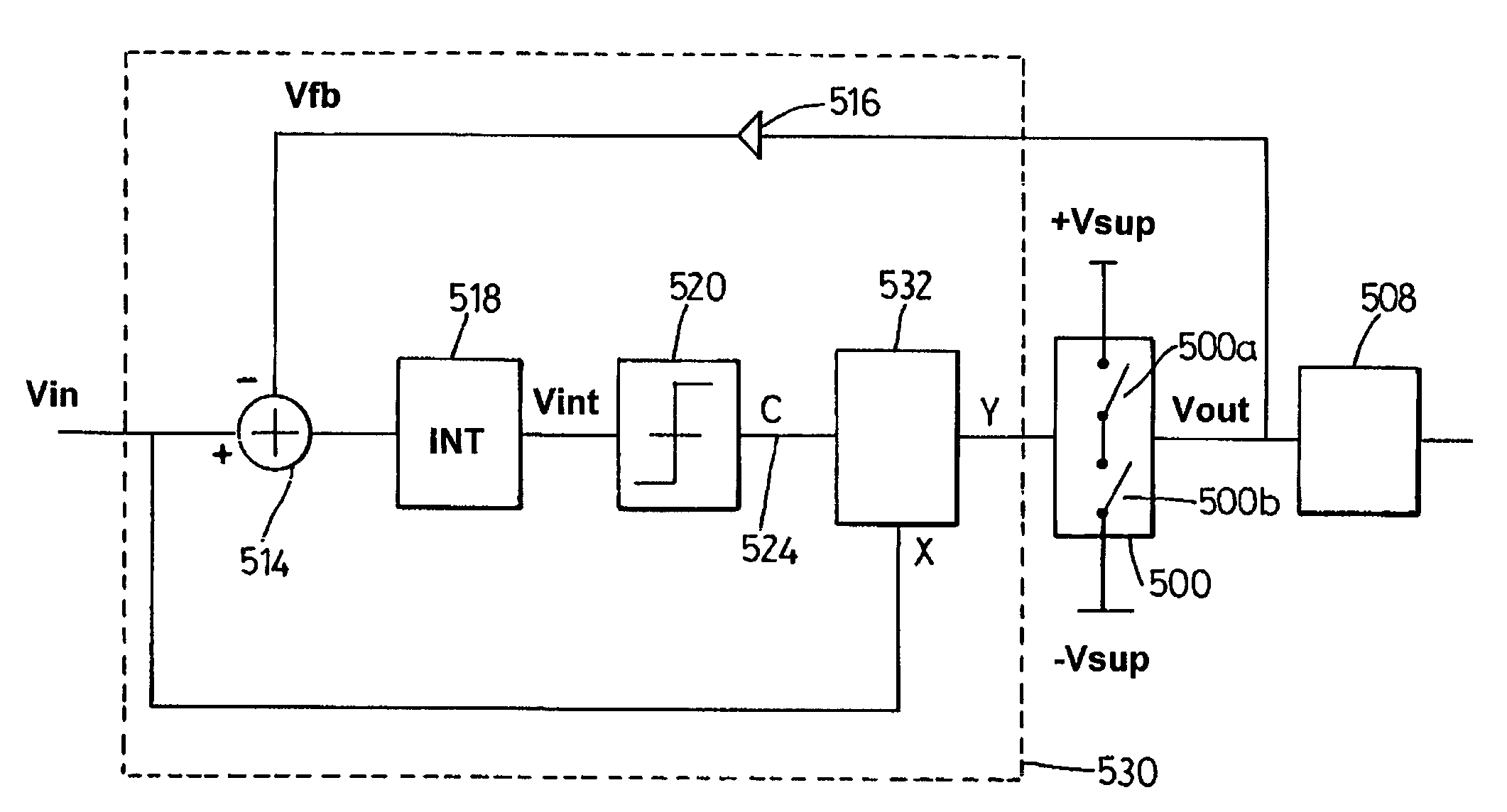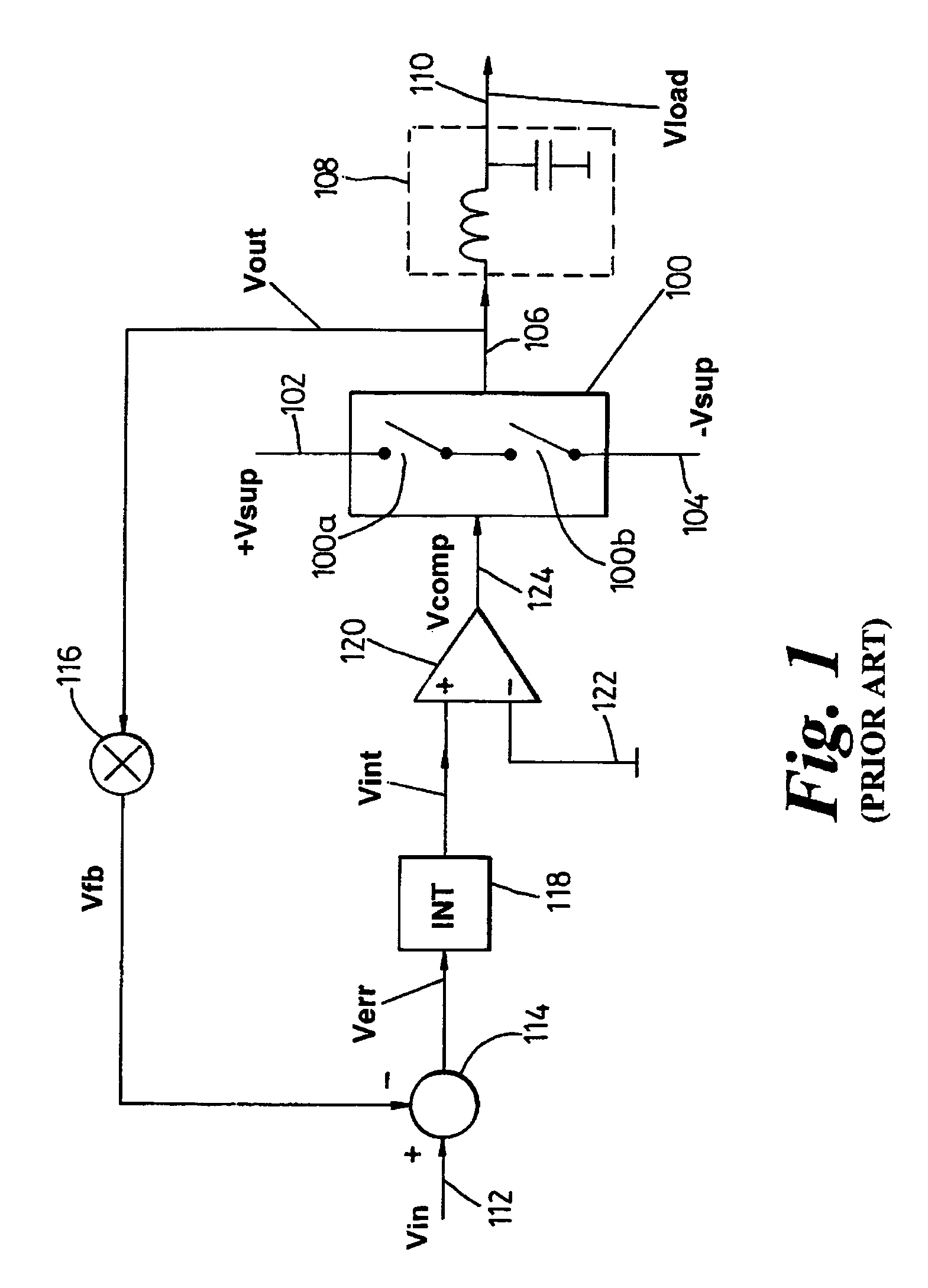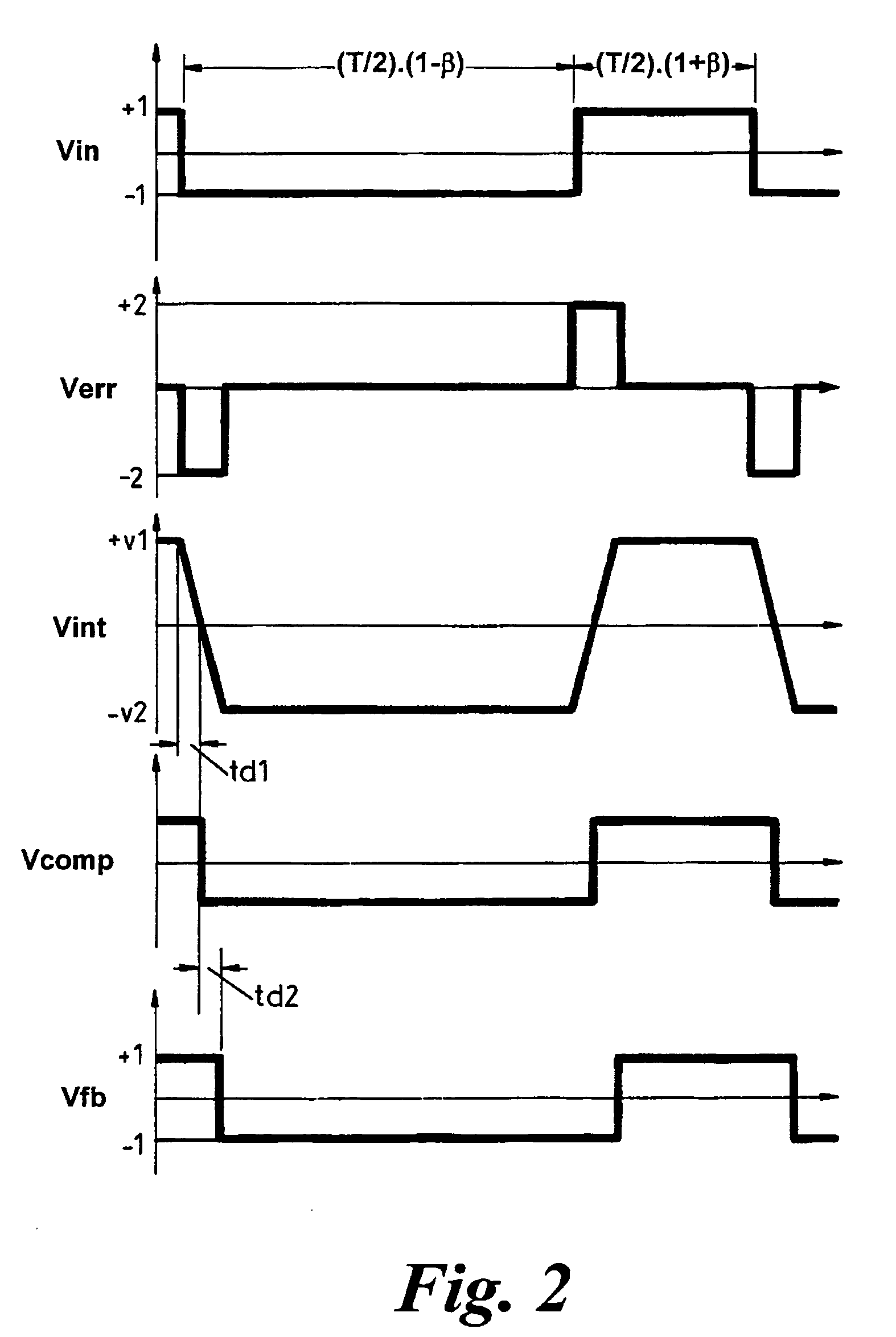Feedback controller for PWM amplifier
a technology of a feedback controller and an amplifier, which is applied in the direction of amplifiers, dc amplifiers with modulator-demodulator, semiconductor devices/discharge tubes, etc., can solve the problems of reducing the accuracy requirement of system power supply, and affecting the performance of amplifiers. , to achieve the effect of avoiding unnecessary high-frequency activity, avoiding spurious low-frequency output signal components, and being more robust against variations
- Summary
- Abstract
- Description
- Claims
- Application Information
AI Technical Summary
Benefits of technology
Problems solved by technology
Method used
Image
Examples
Embodiment Construction
Background
[0071]FIG. 1 shows the overall architecture of a known PWM amplifier circuit with feedback control. The input is a PWM waveform Vin corresponding to a desired analogue audio signal. If the preceding PWM modulator is digital, Vin's edges will probably be quantised in time, aligned to some very high speed clock; if the preceding modulator is analogue, the edges will generally not be constrained to discrete time points.
[0072]The PWM amplifier comprises a power switch 100 comprising a pair of controllable switches 100a and 100b such as power MOSFETs coupled in a push-pull arrangement between positive and negative supply rails 102 (+Vsup) and 104 (−Vsup). The output 106 of the power switch is coupled through a low-pass output filter 108 to output terminal 110 which imposes a voltage waveform Vload on whatever load is to be driven. Input terminal 112 is connected to a positive input of a subtractor 114. Signal Vout from the output 106 or power switch 100 is also fed via an atten...
PUM
 Login to View More
Login to View More Abstract
Description
Claims
Application Information
 Login to View More
Login to View More - R&D
- Intellectual Property
- Life Sciences
- Materials
- Tech Scout
- Unparalleled Data Quality
- Higher Quality Content
- 60% Fewer Hallucinations
Browse by: Latest US Patents, China's latest patents, Technical Efficacy Thesaurus, Application Domain, Technology Topic, Popular Technical Reports.
© 2025 PatSnap. All rights reserved.Legal|Privacy policy|Modern Slavery Act Transparency Statement|Sitemap|About US| Contact US: help@patsnap.com



